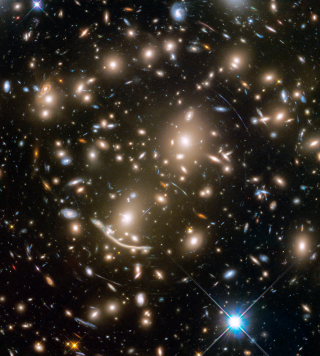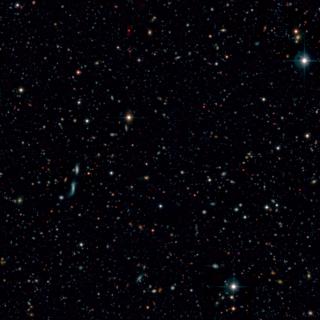Bibcode
Molino, A.; Benítez, N.; Moles, M.; Fernández-Soto, A.; Cristóbal-Hornillos, D.; Ascaso, B.; Jiménez-Teja, Y.; Schoenell, W.; Arnalte-Mur, P.; Pović, M.; Coe, D.; López-Sanjuan, C.; Díaz-García, L. A.; Varela, J.; Stefanon, M.; Cenarro, J.; Matute, I.; Masegosa, J.; Márquez, I.; Perea, J.; Del Olmo, A.; Husillos, C.; Alfaro, E.; Aparicio-Villegas, T.; Cerviño, M.; Huertas-Company, M.; Aguerri, J. A. L.; Broadhurst, T.; Cabrera-Caño, J.; Cepa, J.; González, R. M.; Infante, L.; Martínez, V. J.; Prada, F.; Quintana, J. M.
Bibliographical reference
Monthly Notices of the Royal Astronomical Society, Volume 441, Issue 4, p.2891-2922
Advertised on:
7
2014
Citations
94
Refereed citations
81
Description
The Advance Large Homogeneous Area Medium-Band Redshift Astronomical
(ALHAMBRA) survey has observed eight different regions of the sky,
including sections of the Cosmic Evolution Survey (COSMOS), DEEP2,
European Large-Area Infrared Space Observatory Survey (ELAIS), Great
Observatories Origins Deep Survey North (GOODS-N), Sloan Digital Sky
Survey (SDSS) and Groth fields using a new photometric system with 20
optical, contiguous ˜300-Å filters plus the JHKs bands. The
filter system is designed to optimize the effective photometric redshift
depth of the survey, while having enough wavelength resolution for the
identification of faint emission lines. The observations, carried out
with the Calar Alto 3.5-m telescope using the wide-field optical camera
Large Area Imager for Calar Alto (LAICA) and the near-infrared (NIR)
instrument Omega-2000, represent a total of ˜700 h of on-target
science images. Here we present multicolour point-spread function (PSF)
corrected photometry and photometric redshifts for ˜438 000
galaxies, detected in synthetic F814W images. The catalogues are
complete down to a magnitude I ˜ 24.5 AB and cover an effective
area of 2.79 deg2. Photometric zero-points were calibrated
using stellar transformation equations and refined internally, using a
new technique based on the highly robust photometric redshifts measured
for emission-line galaxies. We calculate Bayesian photometric redshifts
with the Bayesian Photometric Redshift (BPZ)2.0 code, obtaining a
precision of δz/(1 + zs) = 1 per cent for I
< 22.5 and δz/(1 + zs) = 1.4 per cent for
22.5 < I < 24.5. The global n(z) distribution shows a mean
redshift = 0.56 for I < 22.5 AB and = 0.86 for I
< 24.5 AB. Given its depth and small cosmic variance, ALHAMBRA is a
unique data set for galaxy evolution studies.
Related projects

Galaxy Evolution in Clusters of Galaxies
Galaxies in the universe can be located in different environments, some of them are isolated or in low density regions and they are usually called field galaxies. The others can be located in galaxy associations, going from loose groups to clusters or even superclusters of galaxies. One of the foremost challenges of the modern Astrophysics is to
Jairo
Méndez Abreu

Evolution of Galaxies
Galaxy evolution is a crucial topic in modern extragalactic astrophysics, linking cosmology to the Local Universe. Their study requires collecting statistically significant samples of galaxies of different luminosities at different distances. It implies the ability to observe faint objects using different techniques, and at different wavelengths
Jorge
Cepa Nogue